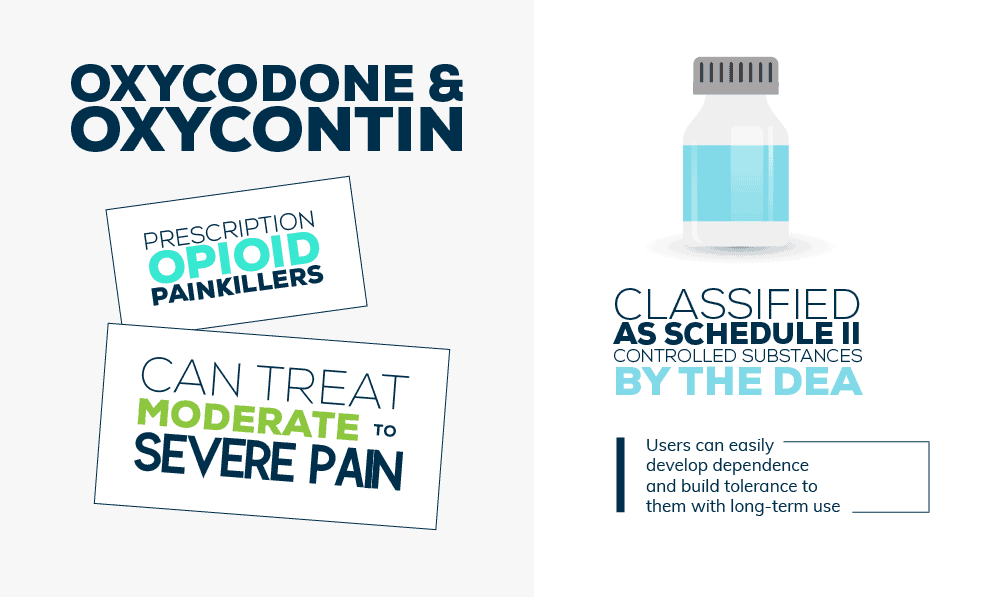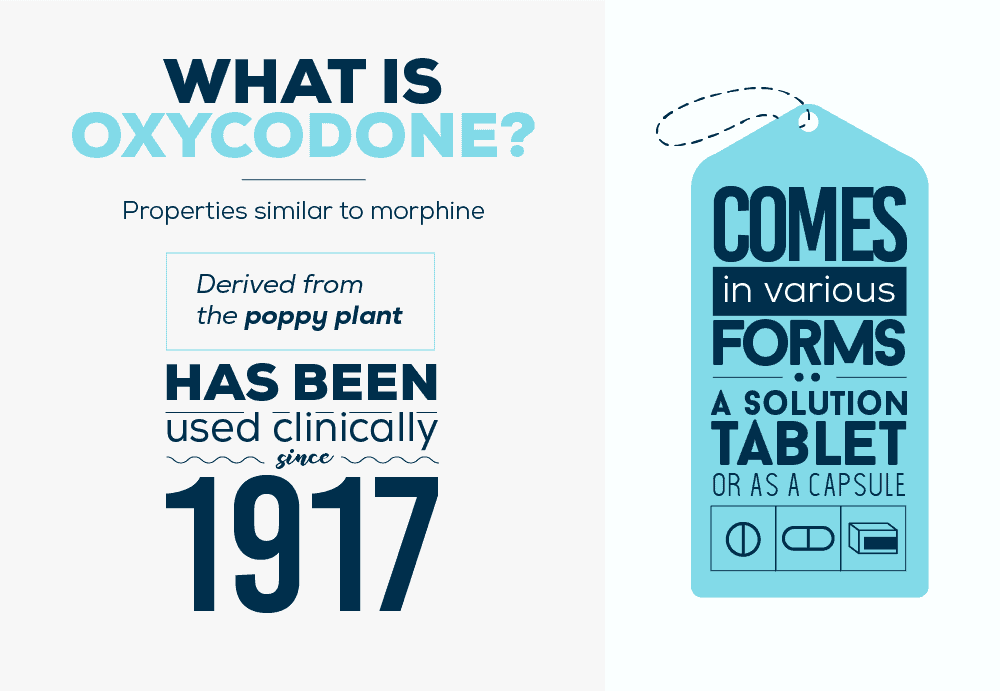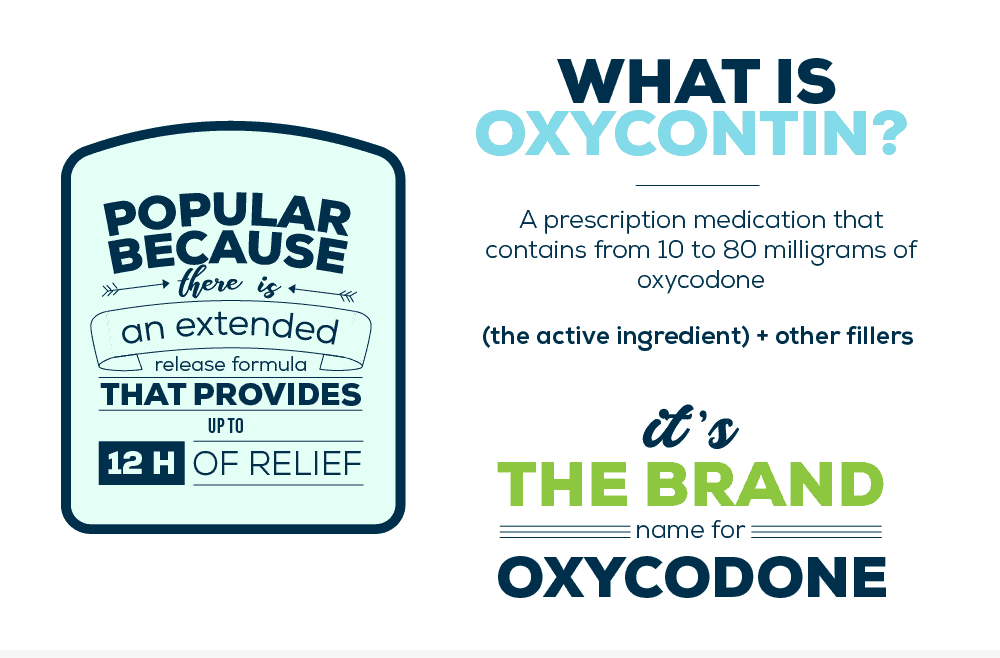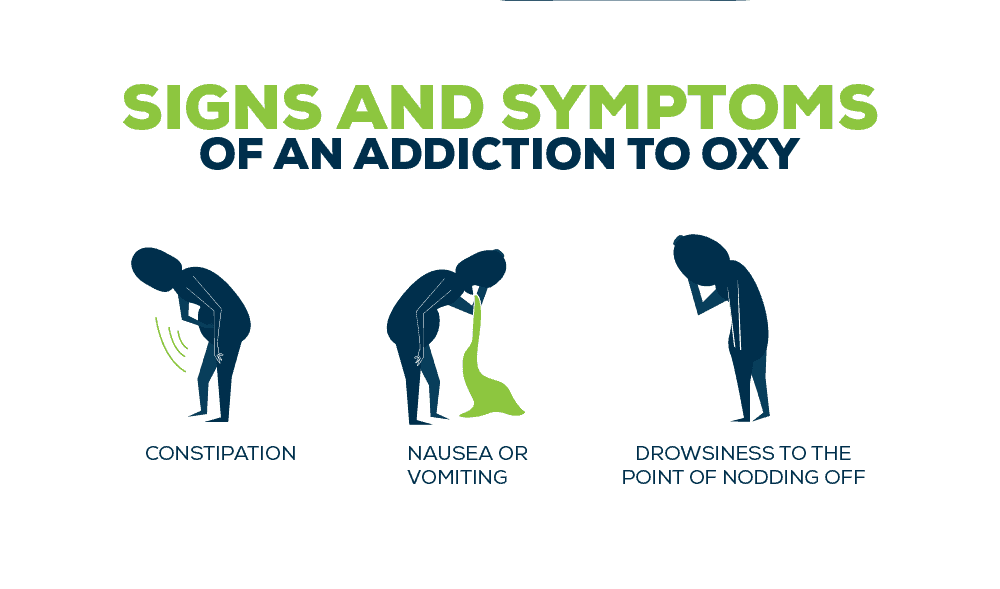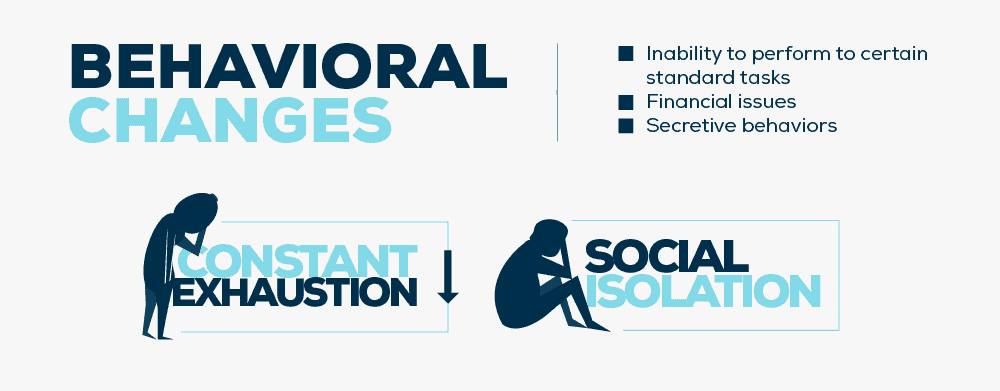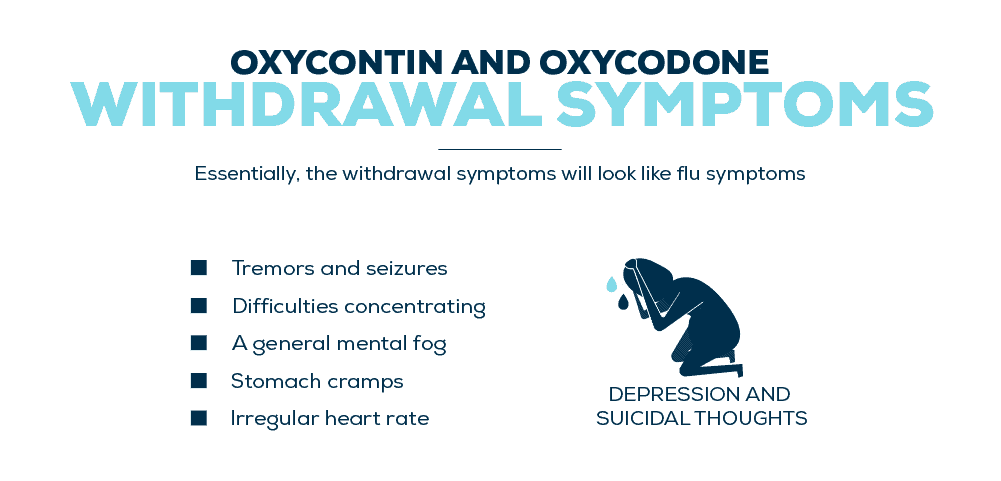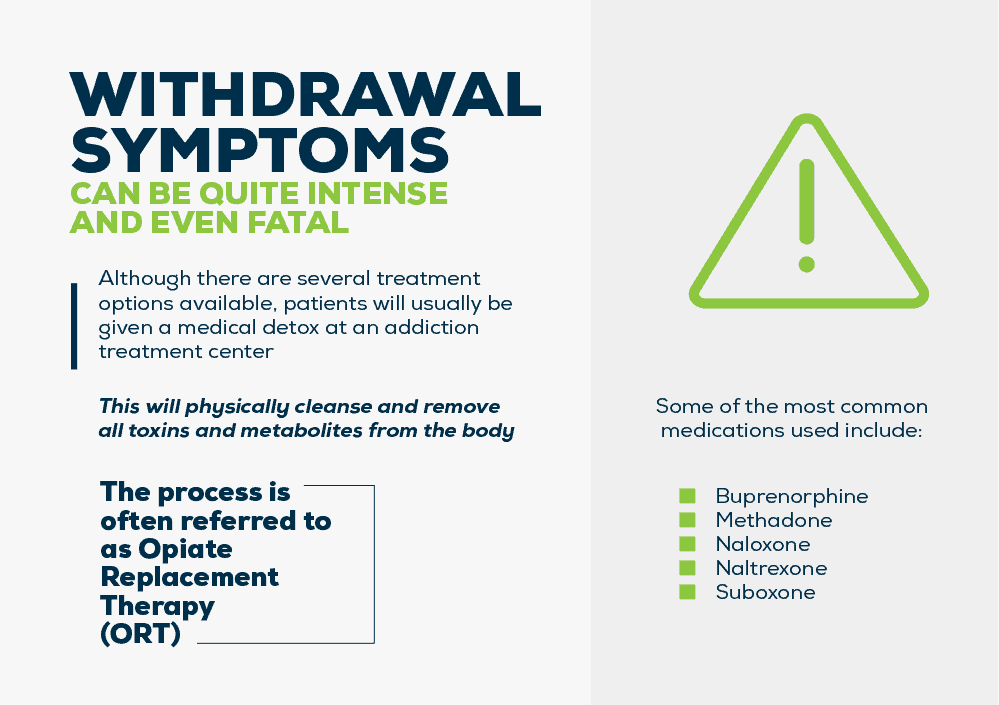Oxycodone and OxyContin both sound similar, but they don’t refer to the same substance. Both are analgesics, are pain relievers and are opiates. As opiates, these substances are derived from the poppy plant. Both substances are also classified as Schedule II controlled substances by the Drug Enforcement Administration (DEA). They’re also often referred to as Oxy. While both prescription opioids can treat moderate to severe pain, they also have a potential for abuse. They are addictive, and it’s easy to develop dependence and build tolerance to them with long-term use. Both are commonly abused substances. Read on to learn more about the differences between the two.
“Get your loved one the help they need. Our substance use disorder program accepts many health insurance plans, this is our residential program.”
Oxy Statistics
Oxycodone and OxyContin are both opiates. Opiates are some of the most abused drugs in America at the moment. They attach to opioid receptors in the central nervous system (CNS) to produce euphoric effects. These types of narcotics are responsible for the most drug overdoses. That’s not surprising consider how addictive they are. Many studies have looked at the addictive nature of these semi-synthetic opiates. Take a look at the addiction statistics below to wrap your head around how big this epidemic truly is:
- 9.9% of Americans between the ages of 18 and 25 have abused this drug
- 1 in 30 high school seniors have misused OxyContin at least once
- 53 million prescriptions were filled in 2013 by U.S. pharmacies
- 30 tablets of 40mg of OxyContin cost about $240 when obtained through a pharmacy; however, these prices skyrocketed 5 times on the black market
- 182,748 visits to the emergency room in 2010 were a result of use or misuse of oxycodone and its derivatives
- 81% of the world’s supply is consumed in America
- 42,249 drug overdoses in 2016 involved the use of opiates
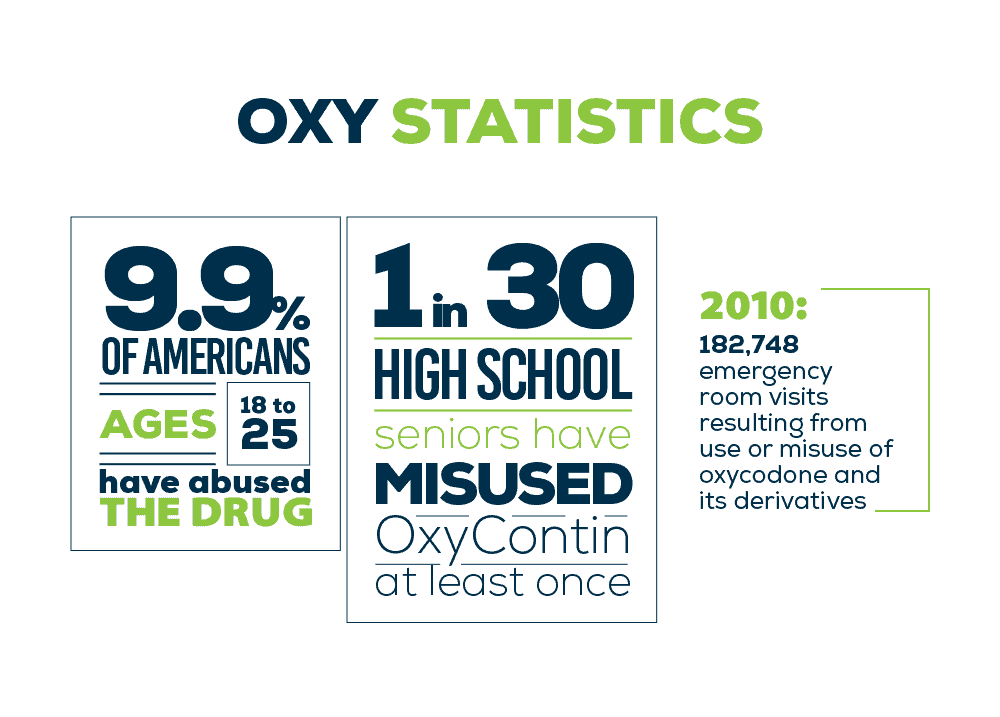
What Is Oxycodone?
Oxycodone is derived from the poppy plant. It has properties similar to morphine and has been used clinically since 1917. This prescription medication is a semi-synthetic opioid. It was first formulated to replace heroin, which was just banned at the time for being too addictive. This prescription drug was designed to treat moderate to severe pain. It has a similar mechanism of action as fentanyl, over-the-counter pain relievers, and codeine. Although this drug is incredibly effective, it is just as addictive as heroin. Upon attaching to opioid receptors in the brain, this medication can cause an influx of neurotransmitters to flood the brain. Dopamine and serotonin, for example, are two neurotransmitters that are highly affected. This influx creates feelings of euphoria and bliss. Oxycodone can come in various forms. It can come as a solution, as a tablet or as a capsule. This chemical comes in two active forms: an immediate-release form or an extended-release form. The extended release tablets are usually taken once every 12 hours with or without food. The immediate-release tablets are usually taken once every 4 to 6 hours. Remember that they have a much faster acting mechanism.
Similar Medications
Oxycodone is similar to many other opiates around. For example, it’s similar to fentanyl, hydromorphone and codeine. All of these drugs are opiates and have similar mechanisms of action. The only difference lies in their duration of onset and their strengths. All opiates and opioids are derivatives of opium. For example, one of the most salient differences between oxycodone and fentanyl is their relative strengths. While oxycodone is strong, fentanyl is the most potent drug out of all of the opioids and opiates. It is 100 times more potent than morphine, and it is also faster acting in comparison. The type of opiate that’s most suitable for a patient will be at the discretion of the doctor. It depends on the type of injury that the patient sustained, as well as the intensity of the pain they’re experiencing.
“We treat both addiction and co-occurring disorders and accept many health insurance plans. Take a look at our inpatient program.”
What Is OxyContin?
OxyContin is a prescription medication that contains anywhere from 10 to 80 milligrams of oxycodone. Basically, this is its active ingredient. Because of this, OxyContin is technically oxycodone. It’s simply the brand name version of it with a few fillers added. These prescription pills are so popular because they offer an extended-release formula that allows up to 12 hours of relief. This long-acting formula is a blessing for patients who need around-the-clock pain relief. The high oxycodone content also makes this medication popular amongst drug abusers. Drug addicts who abuse opioids and opiates often crush the tablet to swallow it or snort it. The medication can also be diluted in water and injected intravenously. By breaking the medication, the time-release mechanism breaks. The result is that drug users get to enjoy the full effects of the drug. Since this opioid brand contains such a high concentration of oxycodone, the effects of this drug are comparable to heroin. 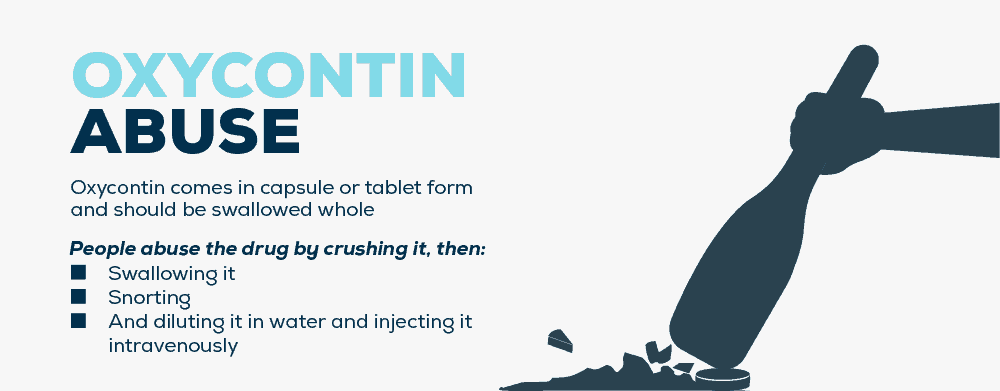
How Addictive Is It?
There’s a lot of speculation surrounding the addictive nature of OxyContin. So, if you’re wondering how addictive OxyContin is, the answer is very. In comparison to other opioids and opiates, this prescription medication is perhaps one of the most addictive ones out there. Studies show that a one-day supply of these drugs carries a 6% chance of being addicted to the pills a year later. The risk of getting addicted to OxyContin doubled with a six-day supply. These numbers further quadrupled with a 12-day supply. The longer that a person took this drug, the more likely they are to be addicted.
Signs and Symptoms of an Addiction to Oxy
There are plenty of oxycodone addiction or OxyContin addiction stories. These drugs are some of the most addictive substances out there. They’re also commonly prescribed to treat pain, so a lot of Americans are addicted to either one of these drugs. If you or a loved one is taking these drugs, it’s important to pay attention to determine when use crosses the line into misuse or abuse. If a loved one is abusing drugs, it’s important that you tread carefully when addressing the addiction. Don’t be judgmental, as it will only push them further away. In addition to trying out one of our addiction quizzes, look out for both physical symptoms and behavioral signs of an addiction.
Physical Symptoms to Look Out For
Since both of these prescription opioids are so potent, someone who is abusing either one of them will exhibit certain physical symptoms. These symptoms are the body’s natural response to the drugs. They include:
- Constipation
- Constricted pupils
- Dizziness and lightheadedness
- Drowsiness to the point of nodding off
- Dry mouth
- Extreme euphoria
- Fatigue and exhaustion
- Headaches
- Itchiness
- Loss of consciousness
- Low blood pressure
- Nausea and vomiting
- Profuse sweating
- Respiratory suppression
- Sedation
If a person is acting erratically all the time or exhibits extreme physical changes, they may be abusing oxycodone or OxyContin. It’s important to reach out to them or to stage an intervention. Don’t let the abuse get any worse than it has to. The sooner that the addiction is addressed, the easier it will be to overcome it.
Behavioral Symptoms of an Addict
Other than the physical symptoms of abuse, an addict will also experience and exhibit behavioral changes. Here’s a more comprehensive list of the signs to look out for. A shorter and simpler list of behavioral changes to keep an eye out for include:
- Constant exhaustion. You’ll notice the drug user taking naps during the afternoon or during the day. They’re constantly drowsy when they used to be alert.
- A change in appearance. People who abuse drugs tend to look more uncharacteristically disheveled. They may wear dirty clothes or stop grooming themselves. They are more focused on how they’re going to get their next fix.
- Social isolation. Those who have an addiction to opioids will usually isolate themselves from family and friends. They are much more likely to stay at home and even skip activities that they would have once found pleasurable.
- Inability to perform to certain standards. Drug abuse interferes with a person’s cognitive function. It makes it much more difficult to concentrate. As a result, the drug user may start to fail at school or at work. They may neglect household chores.
- Financial issues. The street price of Oxys is quite expensive. A 30 mg pill can cost as much as $50. Drug users may spend hundreds of dollars on their drug habit in a day. Many will start running out of money or face financial difficulties.
- Secretive behaviors. Having an addiction often requires one to live a double life. They become much more secretive.
If you notice signs of an addiction, don’t hesitate to reach out. Show that you’re concerned about their behaviors and that you’ll be a beacon of support during these tough times. Educate yourself on the drugs of abuse and look at the different oxycontin addiction treatment options available.
“We accept many health insurance plans. Get your life back in order, take a look at our residential program.”
OxyContin and Oxycodone Withdrawal Symptoms
Symptoms of an oxycodone withdrawal are similar to those of an OxyContin withdrawal. After all, these two substances are similar and essentially the same thing. They have the same chemical structure. Essentially, the withdrawal symptoms will look like flu symptoms. Some of the most common symptoms include:
- A general mental fog
- Agitation, anxiety and irritability
- Body aches and pains
- Chills and cold sweats
- Depression and suicidal thoughts
- Difficulties concentrating
- Diarrhea
- Fever
- General malaise
- Goosebumps
- High blood pressure
- Intense cravings
- Irregular heart rate
- Nausea and vomiting
- Profuse sweating
- Respiratory depression
- Runny noses
- Stomach cramps
- Tremors and seizures
The intensity of the withdrawal symptoms will depend on the length of the drug use, the amount of drugs taken, among many other factors. In some situations, withdrawals can turn deadly. This is why most experts recommend seeking professional help and medical supervision when quitting. The physical symptoms subside much more quickly than the psychological symptoms. The psychological symptoms can last for up to several months or several years. Some patients will even experience post-acute withdrawal syndrome (PAWS). It takes some time for the neurochemical levels in the brain to recover when withdrawing from Oxy.
Withdrawal Timeline
In general, the withdrawal symptoms will usually kick in within 6 to 12 hours after the last dose for short-acting opiates. The withdrawal timeline is delayed to 30 hours after the last dose for long-acting opiates. Keep in mind that each patient will experience different timelines based on their biological makeup, drug use, among other factors. Symptoms tend to peak at the 72 hour mark. Drug users will start to feel nauseous and as if they’ve come down with the flu. With the right type of treatment or with Oxy detox programs, the physical symptoms will subside within a day. The psychological symptoms will linger around for much longer.
Treatment Options and Programs Available
When detoxing from either drug, it’s vital to seek help from an addiction treatment center. The withdrawal symptoms can be quite intense and they can turn deadly at any time. There are plenty of different treatment options available. However, patients will usually be put through medical detox first. The detox process will physically cleanse and remove all toxins and metabolites from the body. For opiates, the detox process is often referred to as Opiate Replacement Therapy (ORT). Some of the most common medications used include:
- Buprenorphine
- Methadone
- Naloxone
- Naltrexone
- Suboxone
Each medication has its own benefits over the other. Some of these medications are full or partial opioid agonists, while others are antagonists. Agonists work in a similar way to opioids. They have the same mechanism of action and they trigger the same neurochemical cascades in the body. The only difference lies in the fact that they are weaker and tend to be easier to quit. Antagonists, on the other hand, block the opioid receptors in the central nervous system (CNS). Opioids and opiates in the body are no longer able to attach to the receptors; thus, they cannot stimulate or activate them. Detox, alone, cannot treat any type of drug addiction. Patients must also undergo behavioral therapies, counseling sessions and more. They need to have a strong support group to rely on, whether it is through family members and friends or a 12 step program, like Narcotics Anonymous. Recovering addicts need to retrain their brain, so that they can face the cravings without giving in.
Oxycodone and OxyContin are Both Opiates and Have the Same Chemical Structure
Essentially, OxyContin is oxycodone, but oxycodone may not necessarily be OxyContin. The primary component of these drugs can be marketed under many other brand names. These opiates have the same chemical structure, and will activate the same neurochemical and biological pathways in the body and brain. Both of these prescription opiates are very addictive substances. Those who get hooked on the drugs find it difficult to get sober. Many patients who were prescribed the drugs find themselves helplessly addicted after a long period of use. If you’re addicted to either one of them, you’ll need to look for an effective drug rehab program. The right type of professional help can make a world of a difference. Contact us for more information. We can introduce you to the treatment options that we have available and guide you towards the right resources that’ll aid in your road to recovery.
What Did you Think About This Blog?
Give it a Rating!


